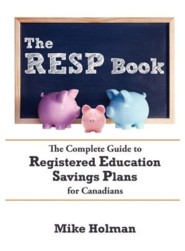You know you are a financial keener if you set up a new TFSA and after 2 months, are thinking about transferring to a different financial institution. Reader Kim commented on a recent TFSA post that he is thinking of doing exactly that.
Here is his comment:
Great information…and I have $5000 in an ING TFSA.
I was wondering if there are consequences of taking some of the money out of my ING TFSA and opening another TFSA at a different institution that allows Stock purchases in the account rather than just cash? As I understand it, any increase in the value of the stock is tax free which COULD be quite substantial.
This brings up a number of very interesting issues and a couple of possible strategies for transferring TFSA money from one institution to another.
First of all he mentions having $5,000 in his TFSA – since that the annual contribution limit and the TFSA program is in its first year – obviously he doesn’t have any contribution room left for 2009.
TFSA transfer to new financial institution
TFSAs are similar to any other kind of account such as an RRSP – you can do a transfer to a new institution without having to withdraw from the TFSA. You can either transfer-in-kind which means that any investments in the TFSA get moved over to the new institution – for example if you own shares in the TFSA, they will be moved without having to be sold and then bought again. Transfer-in-cash means that the investments are sold and only the cash amount is moved to the new institution.
In this case the transfer will be in cash. As a result of this transfer there will be no withdrawal or contribution to the TFSA. One thing to be aware of is the transfer fee. Most institutions charge this fee which is generally $100 to $150. If you are transferring to a discount brokerage and have sufficient assets then you might be able to get them to cover this transfer fee. Given that the TFSA only has $5,000 of contribution room, it is unlikely that anyone has enough in their TFSA to get a free transfer (unless of course they have made some incredible trades). Of course you should check if your institution charges this fee and how much it is.
TFSA withdrawal and contribution strategy – aka “The December Strategy”
Another strategy to think about if you are looking at a steep transfer fee is to just withdraw the TFSA money from the existing account and then contribute it to the new TFSA account. The TFSA rules state that any withdrawal will result in an increase of the available contribution room by the same amount in the following calendar year. Assuming that withdrawals are not charged fees (or less fees than the transfer) then someone could do this strategy with the only problem being that they can’t recontribute the money in the same calendar year unless they have enough unused TFSA room which is not the situation in Kim’s case. This is a valid strategy in December (preferably the end of December) because then you can take the money out, wait a couple of weeks and then recontribute it at the new company.
In a few years, most Canadians will probably end up with a lot of unused TFSA contribution room. Let’s face it – between mortgages and the RRSP – there is only so much money available for the TFSA. For those people, there won’t be an issue if they want to move their TFSA – they will be able to just withdraw and recontribute in the same year by using their unused contribution room.
What kind of investments are suitable for the TFSA?
And finally on to the point that I think Kim was actually asking about – should he invest in stocks vs high-interest savings account in a TFSA account for tax reasons?
First of all – the tax considerations should not be the driver of your asset allocation. The first step should be determining what type of investment (cash, stocks, bonds) you want this money to be in. The next step is to figure out what type of account (TFSA, open, RRSP) it should be in.
As far as the potential tax savings – it’s hard to estimate without being able to predict the future but here are a couple things to think about:
- You can’t claim a loss inside a TFSA.
- 3% interest on $5k at 40% marginal rate will save $60 of income tax per year. To have an equivalent capital gains tax benefit you would need a 6% return. Because capital gains tax applies to half of the profit – the rate of return has to be twice the interest rate to break even. 6% stock appreciation is not unreasonable over the long term but will interest rates stay at 3%?
- Transaction fees for the stocks. I didn’t include these in my break-even analysis but they would be a factor. Kim mentioned buying stocks with “some” of the TFSA money – less than $5k is not a lot of money to buy individual stocks with so maybe an index mutual fund would be better. He should look into TD e-funds for that.
If you are looking for more information on mutual funds, index funds and ETFs then sign up for a Morningstar free account. Morningstar is the industry leader in investment information.



